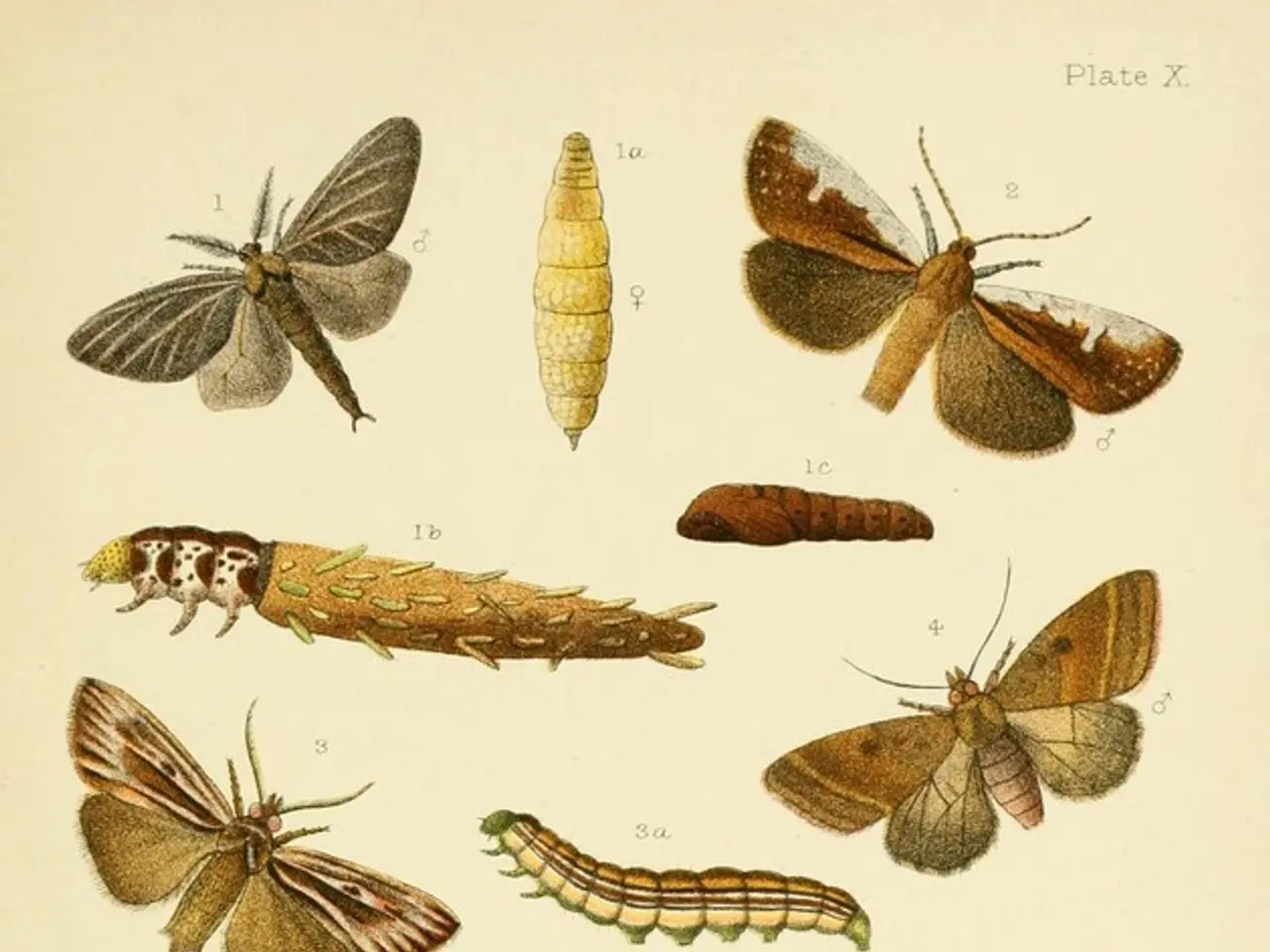Inquiry about seed ticks and their potential threat level.
In the great outdoors, ticks - small parasites that feed on the blood of animals, including humans - pose a potential threat. With over 900 species worldwide, only a few of these creatures bite humans. This article aims to shed light on the signs, symptoms, and prevention methods associated with seed ticks and tick-borne diseases.
Seed ticks, in their larval stage, are particularly small, ranging from 0.5-1.5 millimeters, and appear pale in colour with only six legs. These tiny arachnids, belonging to the class that also includes spiders, mites, and scorpions, are most active during the summer months, making July, August, and September high-risk periods for encounters.
Common symptoms of seed tick bites include initial skin changes at the bite site such as a small pinprick or black dot, a skin-colored, brown, or reddish lump, blistering, bruising, or changes in skin colour like redness or dark purple spots. However, it's important to note that not all ticks pass infections to humans, so not everyone develops a rash after a tick bite.
One of the most well-known tick-borne diseases is Lyme disease, which can result from tick bites. A characteristic sign of Lyme disease is a bull’s-eye rash appearing about a week after the bite. Other symptoms may include malaise, headache, joint aches, fever, muscle aches, and in later stages, joint inflammation, heart inflammation, or neurological symptoms like meningitis and facial droop (Bell’s palsy).
Other tick-borne illnesses like anaplasmosis may cause fever, severe headache, chills, fatigue, muscle aches, nausea, cough, and sometimes confusion, but rarely a rash.
To prevent tick exposure, it's recommended to wear long sleeves and pants when outdoors, especially in wooded or grassy areas. Using permethrin-treated clothing and insect repellents recommended by health authorities can also provide an additional layer of protection. Keeping grass and brush trimmed around your home can reduce tick habitat.
Carefully checking your body and clothing for ticks after spending time outside, paying close attention to armpits, scalp, behind knees, and other warm areas ticks may cling to, is essential. Promptly and properly removing any ticks found on the body can reduce the risk of infection.
If a tick bite occurs, cleaning the area with soap and water is advised. Monitoring for symptoms such as rash, fever, or flu-like signs within days to weeks is important. Early detection and treatment with antibiotics like doxycycline or amoxicillin can prevent progression of tick-borne diseases. Testing immediately after a bite is generally not useful, as infections take weeks to become detectable.
While hiking, wearing pants and long sleeves, tucking shirts and pants, using hats with neck flaps, wearing lighter-colored clothes, and applying topical insecticides like DEET or permethrin (after consulting a doctor or pharmacist) can help avoid tick bites. Showering within 2 hours of coming indoors can also reduce the risk of Lyme disease and other tick-borne illnesses.
It's crucial to remember that ticks in the larval stage are capable of attaching themselves to humans and other animals. In the U.S., the three species most likely to bite humans are the blacklegged tick, dog tick, and lone star tick. Preventing ticks in the yard can be achieved by removing leaf litter, tall grass, and brush, trimming trees and bushes, keeping grass mowed, widening trails, and keeping pets away from brush and tall grasses.
In conclusion, understanding the signs, symptoms, and prevention methods of seed ticks and tick-borne diseases is essential for maintaining a safe and healthy outdoor experience. By taking the necessary precautions and being vigilant, you can enjoy the great outdoors while minimising the risks associated with tick bites.
Diabetes and bipolar are unrelated to seed ticks and tick-borne diseases in the outdoor environment, but it's important to maintain overall health-and-wellness by managing medical-conditions such as diabetes and depression.
AQ, a chemical compound, is not typically associated with seed ticks or tick-borne diseases, but it is used in various scientific research.
Obesity doesn't directly contribute to the risk of seed tick bites or tick-borne diseases, but maintaining a balanced diet and regular exercise is vital for overall health and wellness.
Skin care is crucial in detecting seed tick bites, as symptoms may include initial skin changes such as a small pinprick, blistering, or changes in skin color. Keeping an eye on your skin for these signs could help prevent complications from tick-borne diseases.
While Lyme disease and anaplasmosis are common among tick-borne diseases, diabetes, bipolar, AQ, obesity, and science are not associated with these medical conditions.
Preventive measures, including wearing protective clothing and using insect repellents, can help ward off seed ticks and prevent the transmission of tick-borne diseases like Lyme disease and anaplasmosis.
When outside, avoiding tick habitats, such as wooded or grassy areas, may help minimize encounters with ticks that could carry Lyme disease, anaplasmosis, and other tick-borne illnesses.




